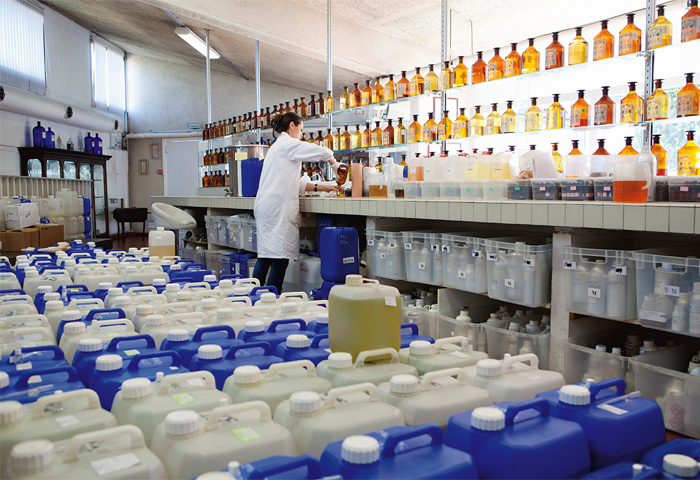Fragrance Pub Industry Terms

Perfume- Also known as “Pure perfume” is the most concentrated form of fragrance on the market. Perfumes usually contain between 20-40 percent aromatic oils and are usually sold in smaller sizes. Due to its high concentration perfume is often the strongest and longest lasting, which is why you often only need to apply a little and they are often the most expensive. Perfumes are best used for special occasions, events, and gatherings when you want people to remember you and your signature scent long after you have left the room
Eau de Perfume- Also referred to in the fragrance industry as EDP. A fragrance is considered Eau de Perfume when it has 15-20% of aromatic compounds. Like pure perfumes, due to its high concentration, most Eau de Perfumes usually come in splash bottles and are typically around 1-2oz. Also, like pure perfumes, Eau de Perfumes often tend to last longer and often only need a small amount to be applied. Eau de Perfumes are best when used for nights out on the town, parties or casual meet ups with friends and associates. Eau de perfumes are often the second most expensive in the perfume industry.
Eau de Toilette- Eau de Toilette is the most common strength in the fragrance market. Eau de Toilette’s can contain an aromatic concentration of between 5-15%, however, most of the time it is between 4-8%. Eau de Toilette or Toilette Water as its sometimes referred to, usually last between 4-5 hours and is most suitable for work like environments or when dealing with situations where you come in contact with lots of different people with different levels of fragrance sensitivity. Eau de Toilet’s can be applied a few times during the day, if necessary, and does not often have a strong overpowering aroma. They are sometimes called “Toilet Water” which is a term that predates the modern-day toilet and symbolized personal hygiene or grooming in the olden days
Eau de Cologne- The word “Cologne” originated from Cologne Germany where the first colognes were manufactured. Eau de Cologne is the lightest strength out of all fragrances. Eau de Colognes usually has an aromatic concentration of around 2-4%. One of the biggest misconceptions in the perfume industry is that all colognes have to be men fragrances. While most Eau de Colognes are men fragrances, men fragrances also can come in other fragrance strengths such as ‘Eau de Toilette” and “Eau de Perfume”. Although rare there are also a few women fragrances that come in Eau de Colognes. Due to their high-water base and lower aromatic compound, “Eau de Colognes” typically come in larger bottles and are often cheaper in comparison to other fragrance strengths. Eau de Colognes can be worn in any setting especially by and around those with fragrance sensitivities.
Aftershave balm- A soothing scented lotion or sometimes oil, used for application to the face after shaving that usually contains an antiseptic agent such as alcohol, glyceryl stearate citrate, or witch hazel to prevent infection, cuts, as well as act as an astringent to reduce skin irritation.
Signature Scent-A signature scent is the mark of a fragrance that makes a distinct impression on those who encounter it. Sometimes the term is used to describe the name of a scent or fragrance that people have become accustomed to smelling on an individual.
Essential Oil- This oil is the essence of plants obtained by distillation of the plant material or its concrete. Plant materials include flowers, grass, stems, seeds, leaves, roots, bark, fruit, tree moss and tree secretions.
Incense- The burning of fragrant gums or resins in a solid or power form. Incense usually give off a lingering scented smoke and is the original form in which fragrance was used before perfumes.
Extracts- Concentrated perfume or flower products obtained through the process of extraction using volatile solvents
Undertones- The subtle characteristics of the fragrance background.
Notes- The term note basically means ingredient. A note is the characteristic smell of components in perfumery.
Top Notes- The first impression of a fragrance, which vanishes quickly, often between the first 5 and 30 minutes after application. In many fragrance compositions top notes are usually volatile.
Middle/Heart Notes- The middle stage of fragrance evaporation, which forms the character of the fragrance. Middle notes usually start to emerge after 10 to 30 minutes and can last for hours.
Base Notes- The third stage of fragrance evaporation, these notes are usually the foundation of a scent, and include fixatives such as woods, leathers, tobacco, and animalics. Base notes are usually the heaviest ingredients and often help fix other notes in the perfume formula, they enhance the scent of other ingredients, and in some cases, they imprint their own scent.
